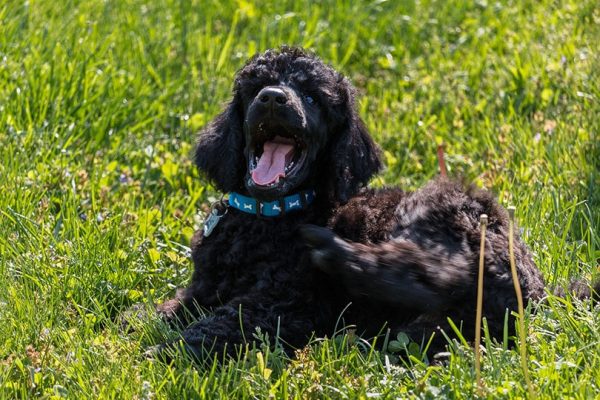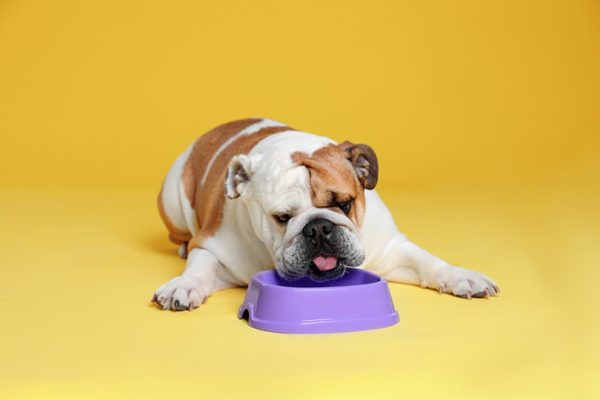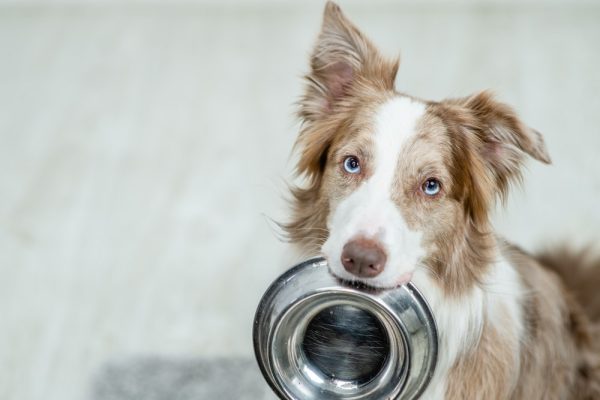Dog-friendly restaurants are all the rage among dog owners, and they are quickly multiplying. However, taking advantage of these restaurants can be challenging (if not impossible) if your dog doesn’t behave in one.
We get it—mixing an untrained dog with plenty of food is a recipe for disaster. Plus, training dogs to behave in a restaurant can be challenging, as there are plenty of distractions.
However, it isn’t impossible. With the proper training, most dogs can learn to relax in restaurants and obey commands amidst all the distractions.

The 4 Steps to Teaching Your Dog to Behave at Restaurants
1. Teach Basic Obedience
Behaving at a restaurant is an advanced skill. Therefore, your dog needs to know the basics already before we begin. Your canine should know all the basic commands, including sitting, staying, and lying down. Walking on a leash may not be necessary while sitting at a table, but it will be necessary to get to the restaurant.
Even if your dog already knows these things, it can be helpful to review them. Older dogs that have had a break in training will especially need the review.

2. Teach the Quiet Command
One of the most common misbehaviors in a dog-friendly restaurant is barking. It’s troublesome to others eating there and can set other dogs off. Therefore, your dog must know the quiet command before you head to eat.
There are two ways to teach this command. You can first teach “speak” and then teach the “quiet” command after a bark. Alternatively, you can catch your dog barking in everyday life and then say, “quiet” when they stop, followed by a treat. Either way works. If your dog already knows “speak,” then training will be much easier.
3. Practice Attention
Another common issue is lack of attention. Your dog may follow commands at home but act completely untrained when surrounded by distractions. In this case, it helps to have a strong “attention” command. This command teaches the dog to look and listen for a command. It signals that they need to pay attention because you’re about to tell them something important.
You can have a specific command word like “look” for this or use the dog’s name. To teach this command, start with a treat in your closed fist. Make sure that the dog saw you put the treat in your hand. You want them excited. Then, hold your closed fist right next to your eyes. Say the command and wait for your dog to make eye contact. When they do, reward them with a different treat. Most dogs will stare at your hand for a few moments before looking away, so be patient.
Once your dog knows this command, you must practice it. Start out in your home. Then, move out to your yard. Practice at different times of the day and randomly on your walks. Once your dog pays attention in these familiar places, start taking them further from home. Once they listen in a crowded place, they’re prepared for the restaurant.

4. Set Your Dog Up for Success
Now that your dog knows all the necessary commands, it’s time to take them to the restaurant. However, you must set your dog up for success, especially during the first visit.
Choose a less-crowded time to visit. Happy hour on a Friday probably isn’t the best time for your dog’s first visit. Instead, choose a time when your dog probably won’t have as many distractions.
Ensure your dog’s needs are met before you enter the restaurant. Get all your dog’s exercise finished for the day. Consider taking them walking before the restaurant visit to ensure they’re tired. You don’t want a hyper, energetic dog when you’re trying to control them in a restaurant. Of course, the amount of exercise your dog needs depends on their age and breed.
Bring high-value treats to the restaurant with you. These should be something that your dog really likes that they don’t get very often. These should help your dog pay attention when they become distracted. Of course, do not give these treats when your dog is begging for food. They should not become a distraction for a misbehaving dog, as that will only reward the bad behavior.
Consider bringing chew toys or puzzle toys for your canine. These can help keep your dog’s mind off distractions and give them something to do. The last thing you want is for your dog to be bored inside a restaurant. However, if your dog is often protective of these toys, skip them. You don’t want your dog to become aggressive.
Don’t forget to bring portable water for your canine. A thirsty dog can become restless. Place this bowl underneath the table to keep it away from the waiter’s feet.

Final Thoughts
Behaving in a restaurant is an advanced skill that requires training. Your dog will need to know all the basic commands, such as sitting and staying. Plus, walking on a leash well is another must. You can’t have your dog pulling inside a restaurant.
Your dog should also be able to ignore distractions and listen to commands. In a restaurant, there are plenty of distractions, and taking a distractable dog inside a restaurant is a recipe for disaster. Therefore, your dog should have plenty of practice listening inside pet-friendly stores and at parks.
Finally, even the best-trained dog must be set up for success. Taking an energetic or hungry dog into a restaurant is a bad idea. Therefore, we highly recommend taking your dog on a walk beforehand. Be sure to bring plenty of treats and toys, as well.
Featured Image Credit: Luis Angelo, Unsplash


















